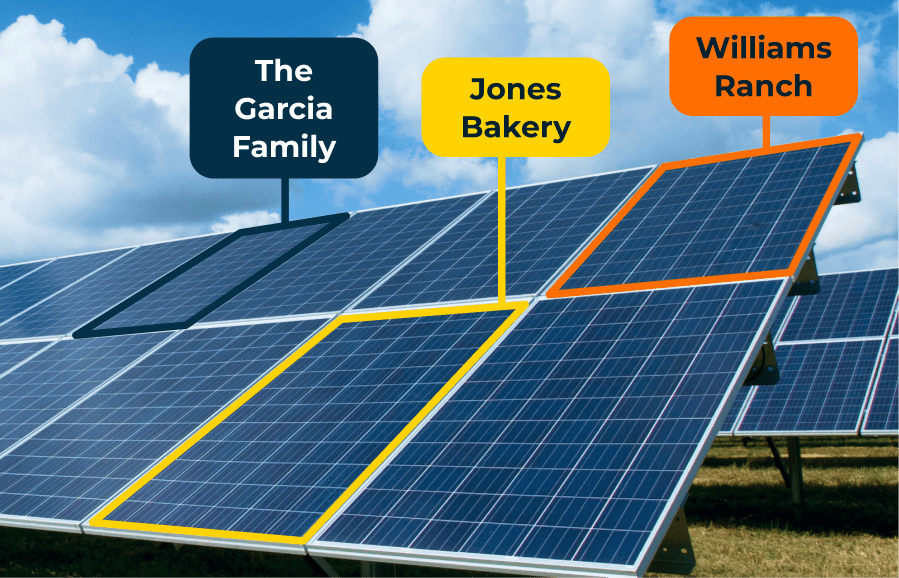
Community Solar Explained
Solar For Everyone, No Rooftop Required
What is community solar?
Community solar is a power sharing model where multiple parties buy electricity from a solar farm located off-site - on the premises of one of our dedicated site hosts.
Community solar farms in the US already generate enough electricity to power more than:
1 Million Homes

How Community Solar Works

Installs, owns, and maintains solar panels

Handles permitting, grid connection, billing, taxes

Manages the sale of electricity




Leases property to
Yosemite Renewables
Host

Receives lease payments

We lease your rooftop and other non-productive space to host a community solar farm.
No PPAs required. We sell power back to the grid and don’t rely on on-site consumption, the tenant’s remaining lease term, or their credit rating.
Host a community solar farm that will secure a long-term revenue stream for you while providing electric bill savings to the community.
Due to their smaller size, these projects can be developed quicker and with greater probability than large-scale solar.

Community Benefits
Reduction in Greenhouse Gas Emissions: Community solar projects allow multiple households to share the benefits of a single solar array, reducing reliance on fossil fuels and consequently cutting down on greenhouse gas emissions.
Land Use Efficiency: By optimizing the placement of solar panels in locations that are well-suited for solar production, community solar can make efficient use of land, sometimes repurposing underutilized spaces like brownfields or landfills.
Habitat Preservation: Our installations are designed to coexist with agricultural or natural lands. We further design our projects with consideration for optimal bird and pollinator habitats.
Strengthening the Local Grid: Community solar facilities contribute to a stronger and more resilient local grid. By generating electricity close to where it is used, these projects can help reduce strain on the grid, especially during peak demand times, and potentially decrease the frequency and duration of power outages.
Energy Storage Integration: When paired with energy storage systems, community solar projects can increase resiliency during periods of high demand. Stored solar energy can be dispatched when it is most needed, ensuring a consistent and stable energy supply even when the sun isn't shining.
Local Economic Benefits: Community solar projects offer power at discounted rates to local subscribers, directly translating into savings on their electric bills. This makes solar energy more financially accessible and provides tangible economic benefits within the community.
Broadened Access: Community solar enables participation in renewable energy generation for those who may not have suitable rooftops for individual solar panels, such as renters, low and middle-income households, or apartment dwellers, leading to a wider adoption of clean energy.
Enhanced Tax Revenues: Community solar projects can significantly boost local tax revenue when they are subject to property taxes. The increased tax base helps fund essential county services like schools, infrastructure, and emergency services without placing the burden on residents.
Economic Multiplier Effect: The initial investment and ongoing operation of community solar installations often stimulate further economic activity, that can lead to job creation and support for local businesses, amplifying the financial benefits across the community.
Job Creation and Sustained Employment: Community solar projects create local employment opportunities for the construction phase and require skilled workers for operation and maintenance, providing long-term job security. This contributes to the local and regional economy by supporting a workforce dedicated to the renewable energy sector over the many years of a project's lifespan.
